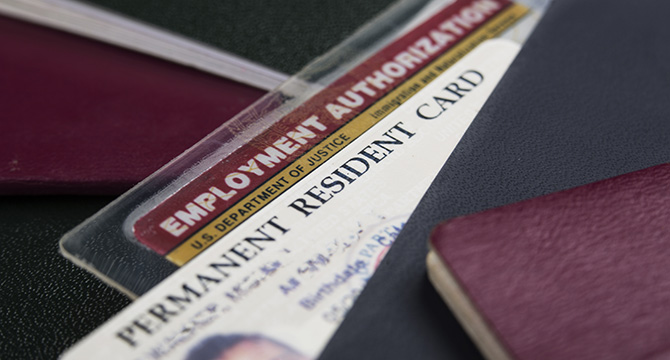First Preference, Employment-Based Priority Workers’ U.S. Immigrant Visas at a Processing Standstill

As of July 18, 2018, the Visa Control and Reporting Division of the U.S. Department of State (DOS) advised that due to heavy worldwide demand it was retrogressing the processing of immigrant visas for certain “priority workers.”
First preference priority workers, commonly referred to as “EB-1” (employment-based first preference) workers, consist of:
- persons of extraordinary ability in the sciences, business, arts or sports;
- outstanding professors and researchers; and
- multinational executives and managers.
The practical effect of the DOS’ announcement is that as of August 1, 2018, neither U.S. Citizenship & Immigration Services (USCIS) nor the DOS will issue immigrant visas or permanent residence status to no less than 137,280 of the world’s most sought-after workers – unless the workers’ intended, permanent U.S. employer filed its EB-1 petition with USCIS more than two years ago, namely no later than May 1, 2016.
On August 14, 2018, in its monthly Visa Bulletin update, the DOS again reaffirmed that immigrant visa and permanent residence processing for EB-1 workers is likely to remain at a standstill through December 2018 or possibly into Q2 of FY 2019.
This delay, commonly referred to as “visa retrogression,” occurs when more foreign nationals apply for an immigrant visa in a particular category, such as the EB-1 category, or from a particular country, than there are immigrant visas available for that month. Retrogression typically occurs toward the end of the federal fiscal year (September 30) as visa issuance approaches the annual category, or per-country limitations. Retrogression allows the DOS to hold worldwide EB-1 immigrant visa use within the maximum annual limits set by Congress for any one federal fiscal year. Typically, when the federal government’s new fiscal year begins on October 1, a new supply of immigrant visas is made available and that alone, but not always, returns the dates to where they were before retrogression.
However, the DOS’ August 14, 2018-issued September Visa Bulletin projects that no measurable relief from EB-1 retrogression will occur until FY 2019’s second quarter.
U.S. employers’ ever-increasing demand for EB-1 workers in the current economic climate has been noted as the cause for the spike in EB-1 employment-based petitions. Given what the DOS recently cited as “an extremely high rate of demand for [EB-1] numbers, primarily for USCIS adjustment of status applicants . . . ,” U.S. employers should take proactive measures to file their EB-1 petitions as soon as possible, thereby “locking in” their priority date to the earliest possible date. This is an important step, given that, absent a slowdown of the U.S. economy, the world’s most sought-after priority workers are again likely to encounter a processing halt to their acquisition of U.S. permanent residence status in the federal government’s 2019 fiscal year, likely even earlier than August 2019.
